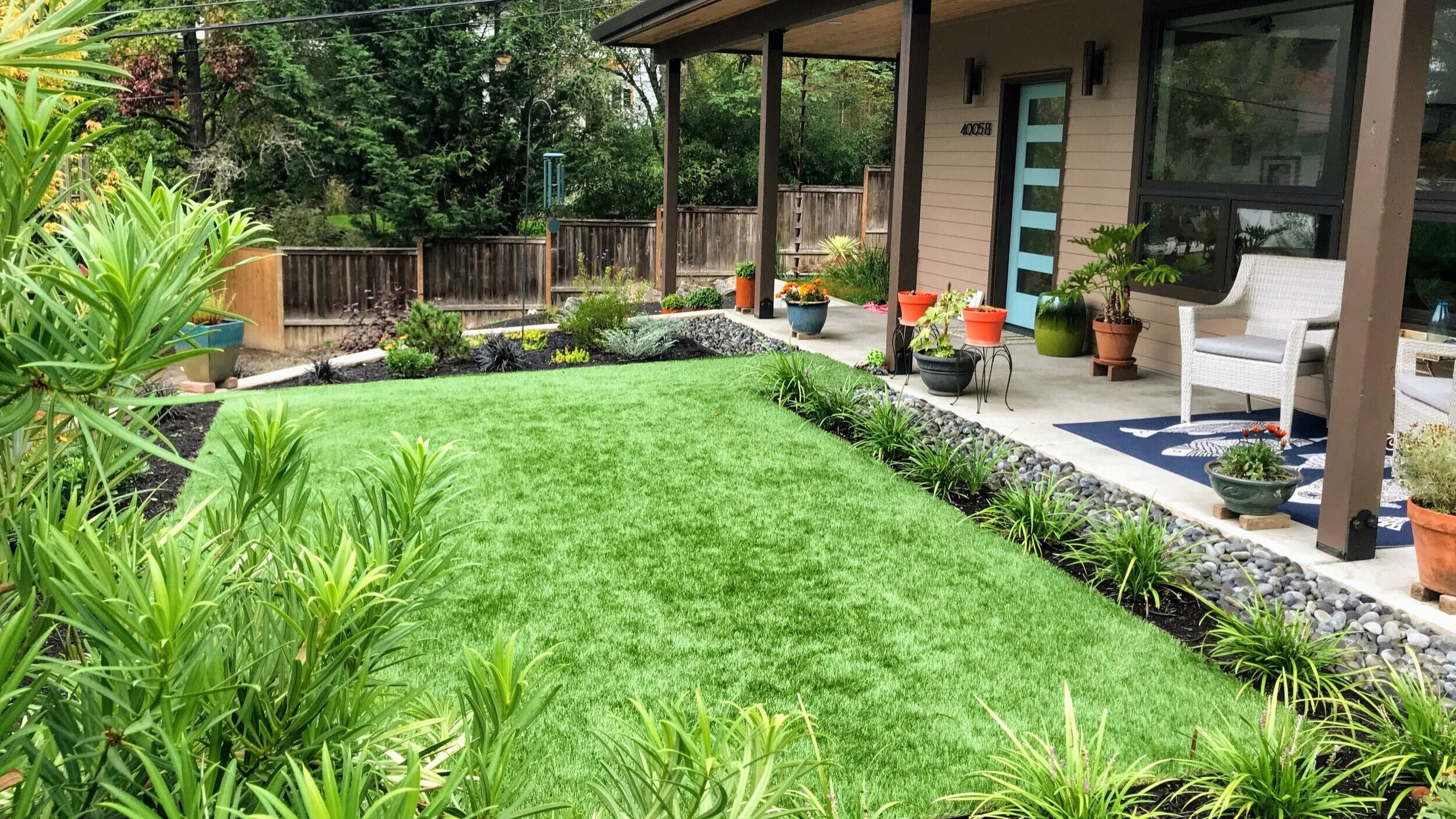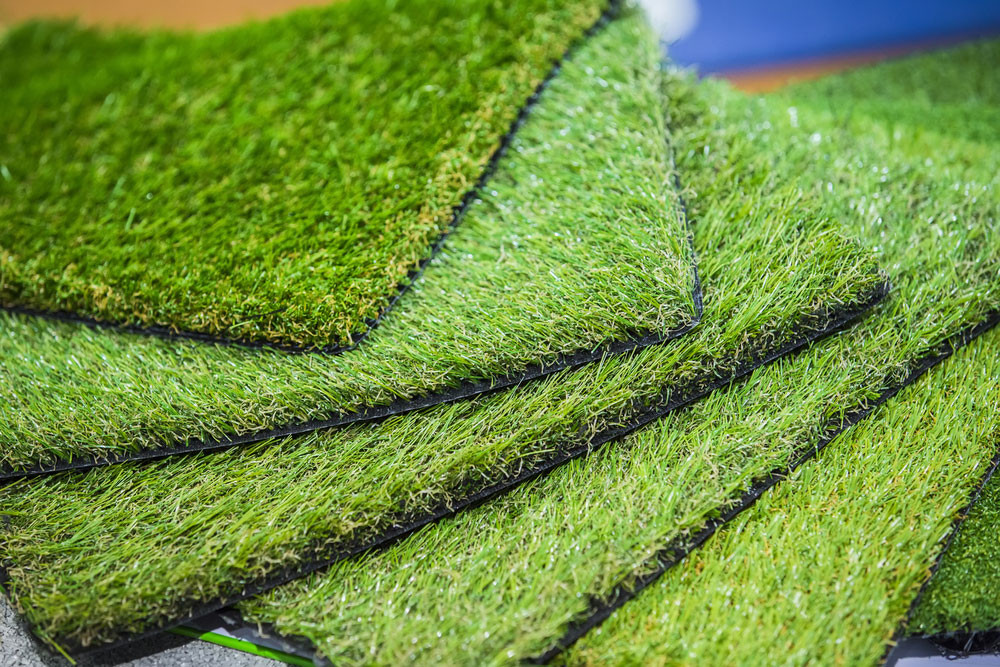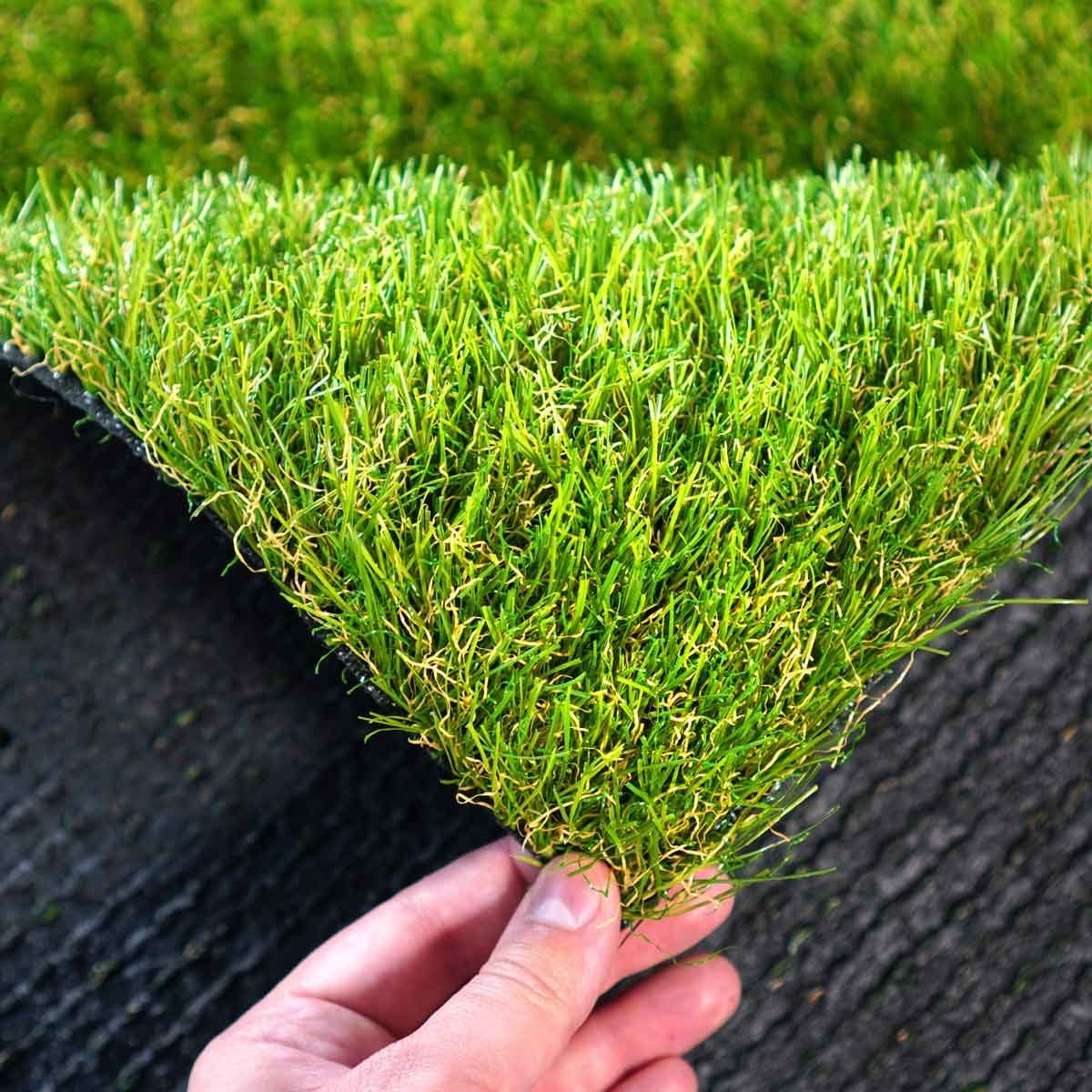Look Into the Environmental Conveniences of Opting for Artificial Grass Solutions
The fostering of fabricated lawn services provides a compelling possibility to attend to pushing environmental challenges. By substantially lowering water use and minimizing the application of dangerous chemicals, these choices not just advertise lasting landscaping however likewise secure regional ecological communities.
Water Conservation Advantages
One of the most significant advantages of synthetic turf is its capability to save water. In contrast, synthetic lawn does not require watering, dramatically lowering the overall demand for water sources.
By eliminating the requirement for regular watering, synthetic grass adds to sustainable landscape methods and helps alleviate the environmental impact of extreme water usage. Moreover, the preservation of water reaches the reduction of overflow, which can lead to soil disintegration and river pollution.
In addition, the installation of fabricated turf permits towns and homeowners to designate water sources a lot more successfully, concentrating on necessary usages such as alcohol consumption water and agriculture. The shift in the direction of fabricated turf not only promotes responsible water usage however additionally aligns with broader environmental objectives targeted at preserving natural deposits.
As areas increasingly prioritize sustainability, the water preservation benefits of synthetic grass offer an engaging instance for its fostering in household and industrial landscaping jobs.
Minimized Chemical Use
The transition to synthetic grass considerably decreases the reliance on chemical therapies commonly utilized in natural turf upkeep. Typical lawn administration commonly entails the application of fertilizers, pesticides, and herbicides to advertise growth and control insects. These chemicals can pose risks to human wellness, neighborhood wildlife, and the environment, adding to dirt and water contamination.
In comparison, synthetic lawn eliminates the demand for these damaging materials. By reducing the launch of synthetic compounds right into the ecosystem, man-made lawn promotes healthier dirt and water systems.
Moreover, the lack of chemical drainage related to synthetic grass installments helps secure local waterways from air pollution, supporting water life and keeping biodiversity. Artificial turf companies phoenix. As areas progressively focus on sustainable methods, choosing for fabricated grass provides a viable option that straightens with environmental conservation goals. With this change, residential property proprietors can delight in lavish environment-friendly spaces without compromising environmental health and wellness, leading the means for a more sustainable future
Lower Carbon Footprint

Furthermore, the setup of fabricated lawn can result in substantial water conservation. All-natural lawns require significant quantities of water for watering, which not only contributes to the carbon footprint connected with water removal and therapy however additionally pressures local water resources. In contrast, synthetic turf needs click to investigate very little maintenance, needing no watering, consequently considerably minimizing water usage and its connected energy expenses.
Furthermore, the long life of fabricated grass contributes to its decreased carbon influence. With a life expectancy of as much as 15 years or even more, the demand for frequent substitutes is decreased, leading to much less waste and reduced power usage in manufacturing and disposing of conventional turf alternatives. Overall, synthetic grass presents a lasting choice for ecologically conscious landscaping.
Environment Conservation
Habitat conservation is an essential factor to consider in the dispute over landscaping choices, specifically when contrasting synthetic grass to all-natural lawn. Natural grass yards usually need substantial maintenance, consisting of making use of pesticides, herbicides, and fertilizers, which can adversely influence neighborhood ecological communities. These visit this web-site chemicals can leach into the dirt and rivers, harming indigenous plants and fauna and interfering with regional habitats.
In contrast, synthetic grass offers an opportunity to reduce the ecological footprint of landscaping. By selecting artificial turf, home owners can decrease the disruption of all-natural environments associated with conventional yard care practices. Synthetic grass eliminates the requirement for harmful chemicals, consequently shielding nearby wild animals and keeping the integrity of surrounding ecological communities. The installment of artificial grass can lead to the conversion of previous grass areas right into even more biodiverse landscapes, such as pollinator yards or native plant areas, which can sustain local wild animals.
Eventually, the shift to synthetic turf not just conserves water and minimizes maintenance efforts however additionally fosters an extra unified partnership in between human activities and the natural environment, advertising environment conservation in the process.
Long-Term Sustainability
Long-term sustainability is a vital consider examining the benefits of man-made grass over conventional turf lawns. One of one of the most substantial advantages of artificial lawn is its durability; it can last approximately 15-20 years with marginal maintenance, whereas natural yard needs frequent reseeding and substitute. This durability decreases the need for continuous sources, such as water, fertilizers, and chemicals, which are necessary for preserving a healthy and balanced turf yard.
Furthermore, synthetic grass contributes to a decrease in right here carbon emissions related to yard treatment devices. Traditional grass typically require gas-powered lawn mowers, leaners, and blowers, all of which add to air pollution. Arizona turf. In comparison, synthetic grass gets rid of the demand for such tools, promoting a cleaner environment
Additionally, the production of synthetic grass progressively makes use of recycled materials, improving its sustainability account. As manufacturers adopt environmentally friendly practices, the environmental footprint of man-made grass continues to reduce.

Final Thought
The adoption of artificial lawn options provides substantial ecological advantages, including significant water preservation, reduced dependence on harmful chemicals, and a reduced carbon footprint. Artificial grass help in maintaining natural environments by minimizing land disruption and advertising long-lasting sustainability via the use of long lasting products. Collectively, these aspects underscore the possibility of artificial turf to add favorably to environmental health and wellness and supply a feasible option to traditional landscape design techniques in a significantly resource-conscious globe.
In contrast, artificial lawn does not require watering, considerably minimizing the overall demand for water resources. By lessening the launch of synthetic compounds right into the ecosystem, fabricated grass advertises much healthier soil and water systems.
Additionally, the setup of fabricated lawn can result in substantial water conservation. In contrast, man-made lawn requires marginal upkeep, requiring no watering, thus substantially lowering water use and its linked power prices.
